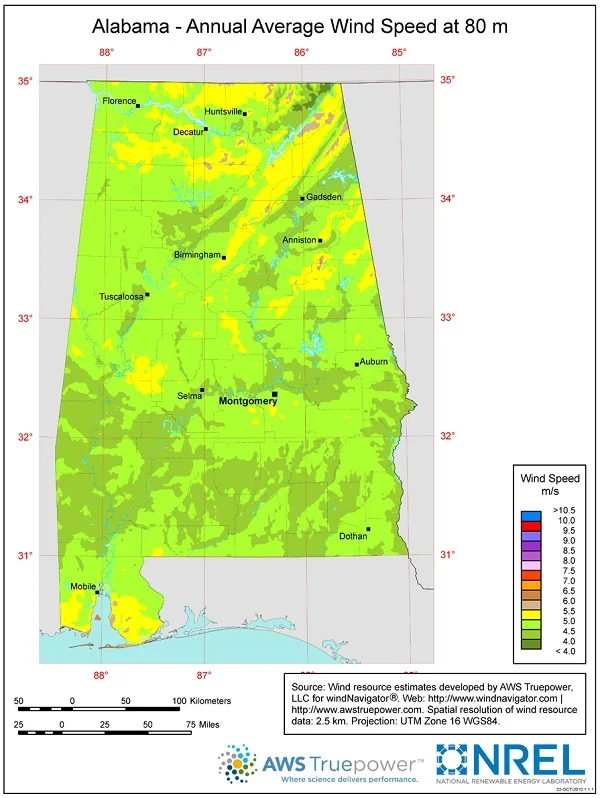t’s a common reaction among those taking their first look at the U.S.Geological Survey’s new interactive map that depicts the location of every utility-scale wind turbine in the country: Whaddup down South?

image via U.S. Geological Survey wind farm map
The Southeastern U.S. is devoid of wind power and has been for a simple reason: It is an area with generally poor wind resource. Check out this map (below) of the predicted mean annual wind speeds at 80 meters, typical turbine height, keeping in mind that it takes average winds of around 6.5 meters per second “to have a wind resource suitable for wind development,” according to the National Renewable Energy Laboratory.

image via NREL
Given this reality, the thinking has been that the best way to put wind power to work in the South is to erect turbines in the wind-rich Plains and wire the power on over. Utilities in the South have already been locking up power purchase agreements for wind from the West. But to really make this transfer work, more and better transmission lines are needed, including high-voltage, direct-current lines that can move massive amounts of power with less electrical losses compared to AC lines. DC lines, for technical reasons, also make for a more flexible and stable grid.
Clean Line Energy Partners is looking to build several big transmission lines from wind country, including Iowa and the Oklahoma/Texas panhandle area, out in various directions, including one, the Plains and Eastern Clean Line that would carry power across Oklahoma and through Arkansas into the heart of the South.
These projects are at various stages of navigating the regulatory process. The company is confident it will eventually get the lines built, but the process is quite a slog. Meanwhile, there is a proposal on the table to actually build wind power in Dixie – but it, too, faces an uncertain future.
A year ago, Pioneer Green Energy, an Austin, Texas, company, proposed building two wind farms – one that would generate up to 80 megawatts, another 18.4 MW – in the northeastern corner of Alabama. As you can see in the map below, that’s a part of the state that does seem to have some decent wind.

image via NREL
The project, however, has faced legal challenges and just last week the Alabama state Senate passed a bill that would set up stringent regulations on any wind farms – so stringent, Pioneer Green Energy told the local Gadsen Times, that if it becomes law, the wind farms won’t be built.
For one thing, a noise limit would measure decibel levels at property lines, not at actual residences. The bill also “requires the towers to be set back from residential or commercial structures or public use areas a distance equivalent to five times the towers’ height,” the Times reported, a very restrictive standard.
Given the anti-wind sentiment that seems to be carrying the day in Alabama, it looks like we won’t soon see turbines popping up in the South on the USGS wind map.






